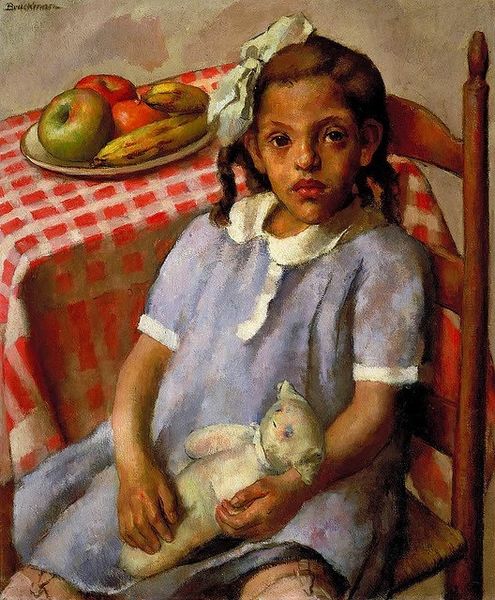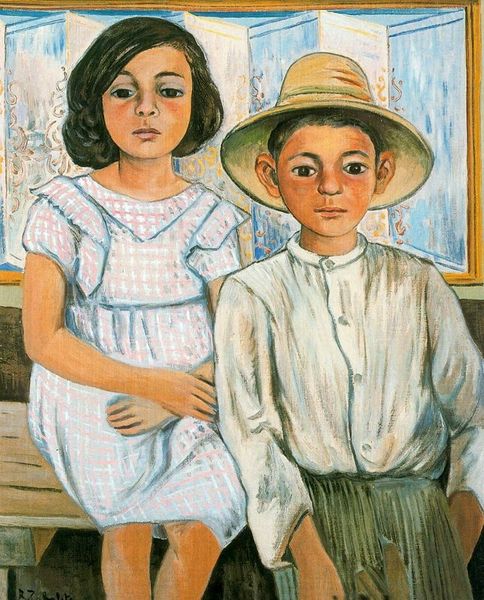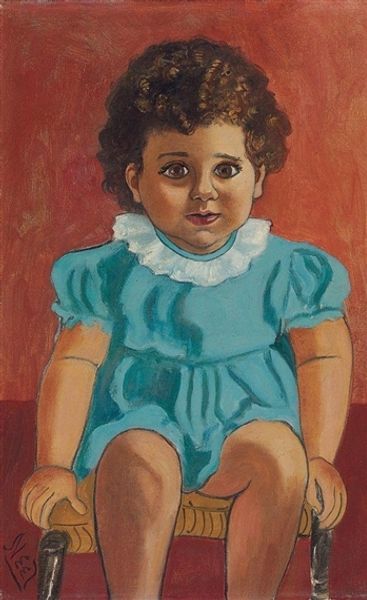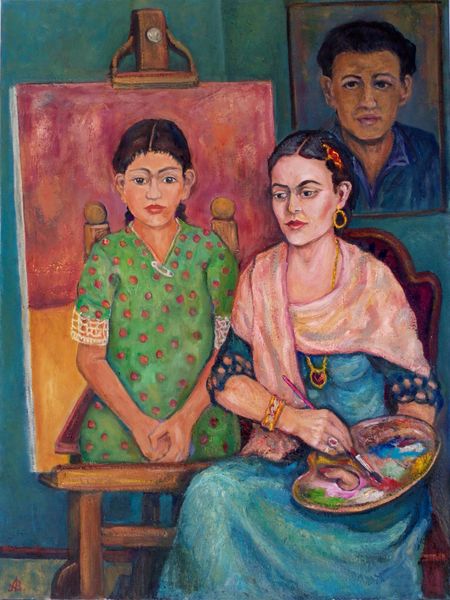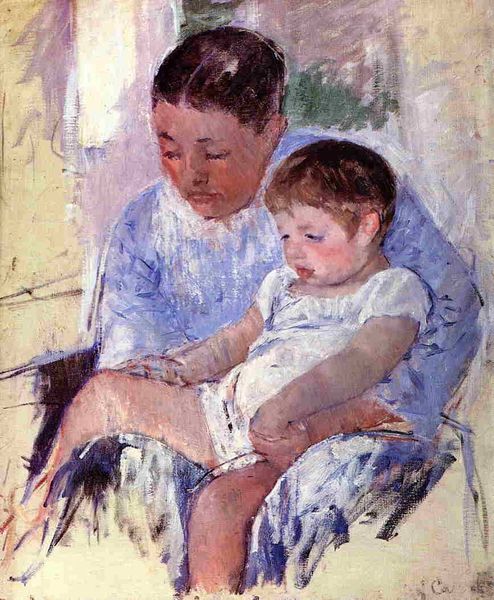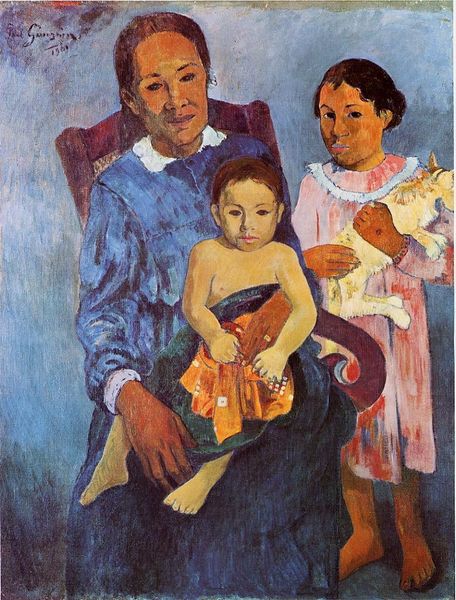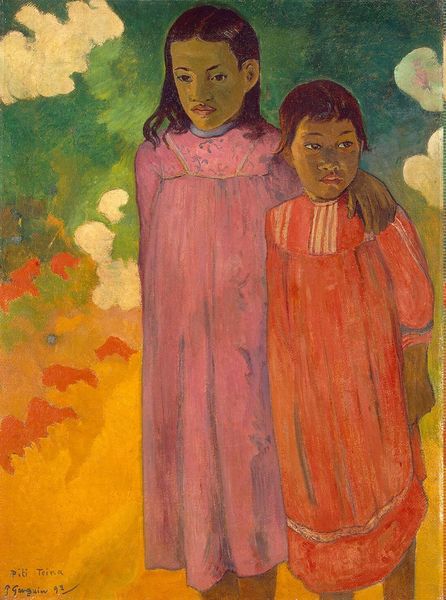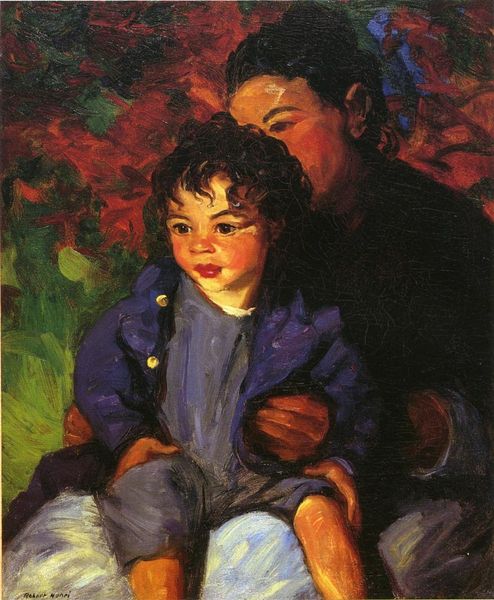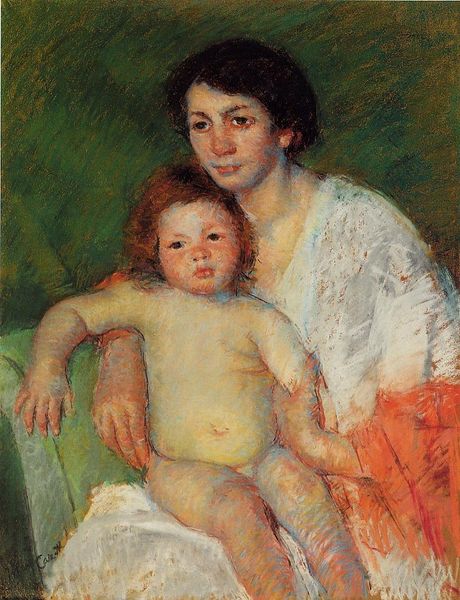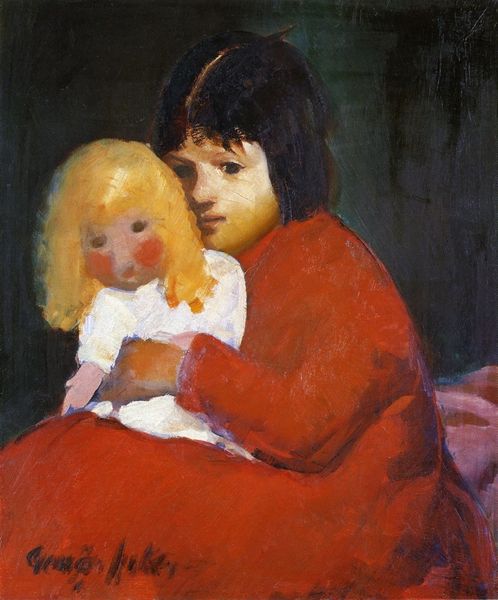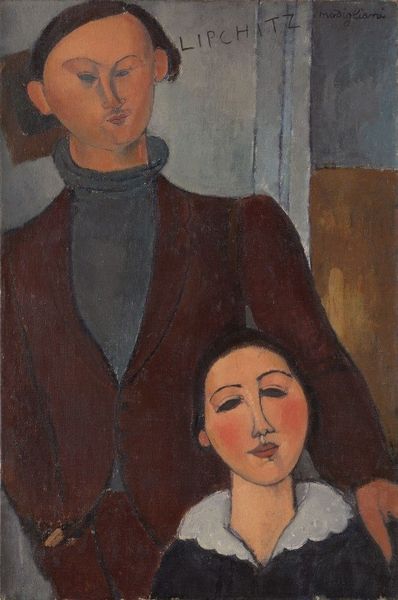
painting, oil-paint
#
portrait
#
painting
#
oil-paint
#
asian-art
#
oil painting
#
group-portraits
#
portrait art
#
fine art portrait
#
realism
Copyright: Public domain China
Curator: Xu Beihong's oil painting, "Portrait of Mrs Tchang Ju Chi and Daughter," presents a compelling depiction of familial bond. The subjects appear posed yet also retain an intimate, unaffected presence. Editor: There’s an undeniable sense of quiet dignity here. The cool blues and gentle pinks, the direct gazes… it all creates a feeling of serene strength. Curator: Precisely. Xu's work often served a public function, promoting particular images during periods of modernization and national identity formation. How might this work be understood in such contexts? Editor: Seeing this portrait, I immediately consider the gaze, particularly that of the mother, but also how women are historically portrayed. This strikes me as challenging convention: she’s not overtly sexualized or romanticized. She meets the viewer directly, with her glasses on, holding a position in the image and in the space around her that feels so strong. It’s a fascinating counter-narrative in the broader history of portraiture. Curator: Indeed. The portrait embodies a certain modernity in its visual language, adopting Western realism while depicting a Chinese subject. It suggests the adoption of external influences with the strong retention of intrinsic traditions. Editor: I think this piece asks vital questions. What does it mean to see a Chinese woman represented with such quiet confidence, and to see it understood by global audiences through different cultural contexts? The visual dialogue Xu constructs between subject and viewer, as well as between cultures, resonates far beyond its surface. Also, to be represented in the traditional style whilst wearing spectacles, that gives the painting a foot in both old and new traditions. It gives us a glimpse into her modern way of living whilst holding firm traditional cultural identity. Curator: I concur. The portrait isn’t just a record of likeness, it's a record of the intersections and convergences present in China's development. Editor: This portrait definitely complicates any simplistic view of identity, providing layers of meaning to engage with across cultural and social planes. The longer I consider it, the more it speaks to ideas of intersectionality in that cultural exchange and personal style blend into one strong message about representation and personal truth.
Comments
No comments
Be the first to comment and join the conversation on the ultimate creative platform.
